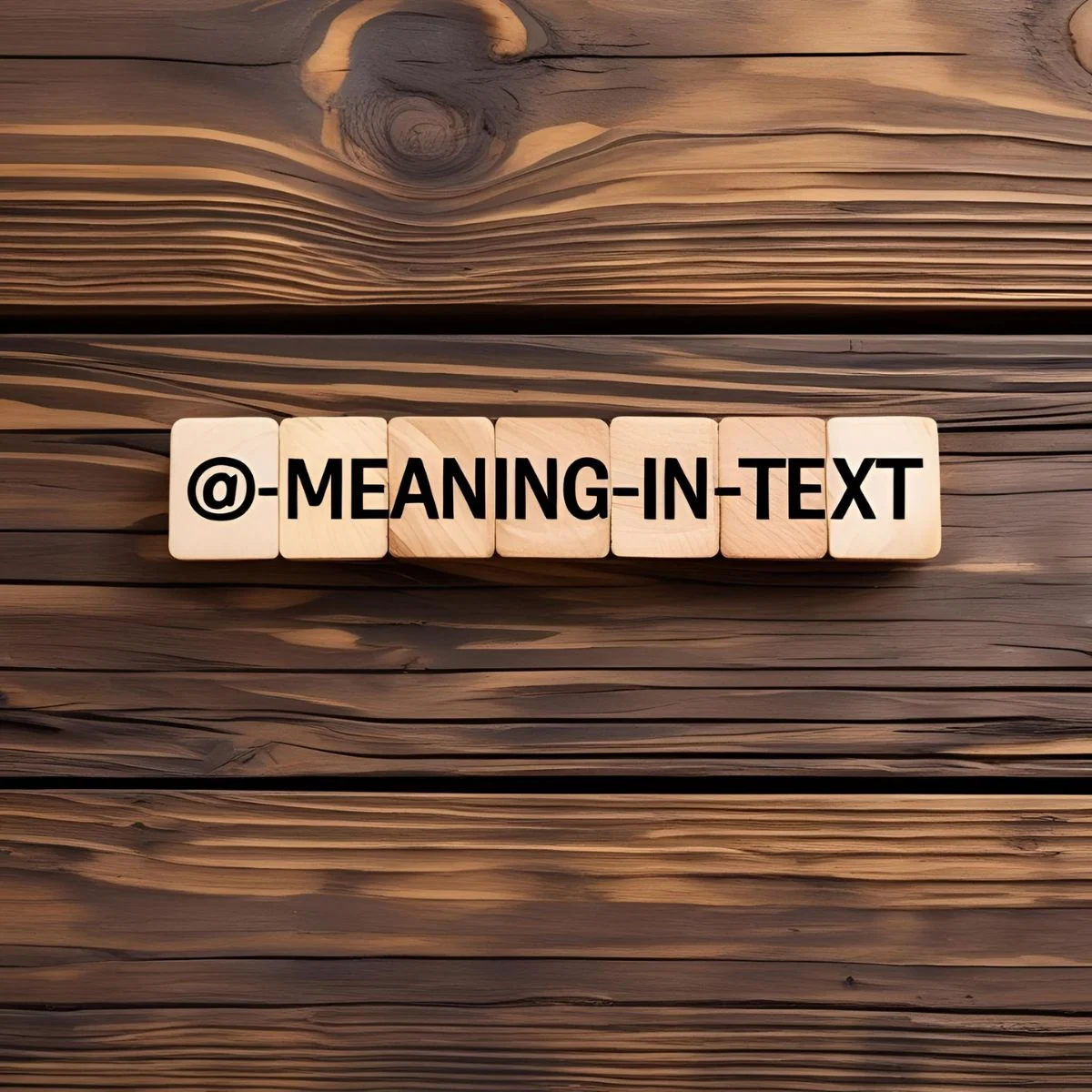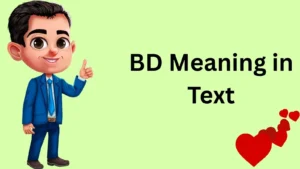Ever received a 🌚 in a text and wondered what’s behind that sly moon face? 🤔 This quirky emoji pops up in chats, social media, and even gaming, adding a dash of mystery or humor. Whether it’s a friend teasing you or someone hinting at something cheeky, 🌚 carries a unique vibe. Understanding its meaning helps you catch the tone, avoid confusion, and reply with confidence. From playful texts to online banter, 🌚 is a favorite for expressing subtle emotions. In this guide, we’ll unpack what 🌚 means, its history, and how to use it like a pro. Let’s shine a light on this lunar emoji! 🌟
Definition & Meaning
The 🌚 emoji, known as the “New Moon Face,” depicts a dark moon with a smirking human-like face. It’s used to convey:
- Sarcasm or Mischief 😏: Suggests a playful, cheeky, or sly tone.
- Awkwardness or Embarrassment 😬: Hints at discomfort or a cringe-worthy moment.
- Flirting or Suggestiveness 😘: Adds a flirty or suggestive nudge in casual chats.
Key Points:
- 🌚 is versatile, often used to tease or imply something without saying it outright.
- It’s popular among younger users for its humorous and subtle vibe.
Examples:
- Sarcasm:
- Friend 1: “You totally aced that test, right? 🌚”
- Friend 2: “Yeah, sure, I’m a genius… 😅”
- Flirting:
- Texter: “Late-night chats are the best, huh? 🌚”
- Reply: “Only with you! 😜”
The 🌚’s meaning depends heavily on the conversation’s tone!
Background & History
The 🌚 emoji was introduced in 2010 as part of Unicode 6.0, under the “New Moon with Face” name. It’s a stylized version of the new moon, with a mischievous human-like expression. Its rise in texting came with the emoji boom in the 2010s, as smartphones and social media made visual communication popular. Initially, it was used for lunar or night themes, but users gave it a playful, sarcastic spin over time.
Key Points:
- 🌚 emerged with early emoji sets in 2010 🌙.
- Its sarcastic and flirty uses grew through social media platforms like Twitter and Snapchat 📱.
- Today, 🌚 is a go-to for humor, teasing, or subtle flirtation in digital chats.
Usage in Various Contexts
🌚 shines in different settings, each with its own flavor:
- Texting 📲:
- Used for sarcasm, teasing, or flirty hints.
- Example:
- Friend: “You’re so good at dancing! 🌚”
- You: “Oh, stop it, I’m a pro… not! 😄”
- Social Media 🐦:
- Adds humor or shade to posts and comments.
- Example:
- Post: “When your boss thinks you’re working late 🌚 #Nope”
- Reply: “Been there! 😂”
- Gaming 🎮:
- Used to tease opponents or highlight sneaky moves.
- Example:
- Gamer 1: “Thought you’d win that round? 🌚”
- Gamer 2: “You got lucky, that’s all! 😎”
- Casual Conversations 🗣️:
- Conveys playful or awkward vibes.
- Example:
- Friend: “Spilled coffee on my shirt today 🌚”
- You: “Classic you! 😜”
Key Point: The 🌚’s vibe depends on the chat—read the mood to get it right! 🔍
Common Misconceptions & Clarifications
🌚 can be confusing due to its subtle meanings. Let’s clear things up:
- Misconception: 🌚 is just a moon emoji.
- Clarification: It’s not just about the moon; it’s about sarcasm, mischief, or flirtation.
- Misconception: 🌚 is always friendly.
- Clarification: It can seem shady or passive-aggressive in some contexts.
- Misconception: 🌚 fits all situations.
- Clarification: It’s too informal for professional or serious chats.
Key Point: Use 🌚 carefully to avoid sounding snarky or confusing in the wrong setting. 😬 For example, sending 🌚 in a work chat might seem unprofessional.
Similar Terms & Alternatives
Here are emojis or phrases that can replace 🌚:
- For Sarcasm/Mischief:
- 😏 (Smirking Face)
- 🙃 (Upside-Down Face)
- “Just saying…”
- For Awkwardness:
- 😬 (Grimacing Face)
- 😅 (Nervous Laugh)
- “Yikes…”
- For Flirting:
- 😉 (Winking Face)
- 😘 (Kissing Face)
- “You know…”
Comparison Table:
| Term | Meaning | Best Used In |
|---|---|---|
| 🌚 (New Moon Face) | Sarcasm, mischief, flirtation | Texting, social media, gaming |
| 😏 (Smirking Face) | Similar to 🌚, more direct | Playful or flirty chats |
| 😬 (Grimacing Face) | Awkwardness or discomfort | Casual, humorous contexts |
| 😉 (Winking Face) | Flirty or teasing | Lighthearted, flirty chats |
Key Point: Choose alternatives like 😏 or “yikes” for clarity in specific situations. ✅
How to Respond to This Term
Your response to 🌚 depends on the tone:
- Casual 😊:
- Example:
- Friend: “You’re totally on time today 🌚”
- You: “Yeah, I’m a punctuality king! 😄”
- Example:
- Humorous 😂:
- Example:
- Texter: “You’re staying up late again? 🌚”
- You: “Gotta live that night owl life! 🦉”
- Example:
- Professional 💼:
- Example:
- Colleague: “Missed the deadline, huh? 🌚”
- You: “I’ll get it done soon, promise!”
- Example:
- Neutral 🔒:
- Example:
- Friend: “Saw your new post 🌚”
- You: “Glad you liked it! 😊”
- Example:
Key Point: Match the vibe and clarify if the 🌚 feels ambiguous. 🧠
Regional or Cultural Differences
🌚 is used globally, but its vibe varies:
- Western Countries 🌎: Often used for sarcasm or humor, especially on social media.
- Asia 🇯🇵: Popular in playful or flirty chats, especially in regions with heavy emoji use like Japan.
- Other Regions 🌍: Understood universally due to emoji standardization, but sarcasm may not translate in all cultures.
Key Point: In sarcasm-heavy cultures, 🌚 is cheeky; in others, it might just seem playful. 🌐
Comparison with Similar Terms
Here’s how 🌚 compares to similar emojis:
| Term | Meaning | Key Difference |
|---|---|---|
| 🌚 (New Moon Face) | Sarcasm, mischief, flirtation | Subtle, moon-themed vibe |
| 😏 (Smirking Face) | Direct sarcasm or flirtation | More explicit expression |
| 🙃 (Upside-Down Face) | Sarcasm or irony | Lighter, less mischievous |
| 😉 (Winking Face) | Playful or flirty | More overtly flirtatious |
Key Point: 🌚 stands out for its subtle, mysterious tone. ✨
Usage in Online Communities & Dating Apps
🌚 is a star online:
- Twitter/X 🐦: Used for shade, humor, or playful jabs.
- Example:
- Post: “When someone says they’re ‘fine’ 🌚 #Sure”
- Reply: “Spill the tea! 😂”
- Example:
- Dating Apps 💘: Signals flirtation or playful teasing.
- Example:
- Bio: “Night owl who loves a good chat 🌚”
- Message: “That moon face means trouble, right? 😜”
- Example:
- Gaming Communities 🎮: Used to tease or gloat after sneaky plays.
- Example:
- Discord: “Stole your loot, whoops 🌚”
- Reply: “You’re sneaky! 😎”
- Example:
Tips:
- On dating apps, reply to 🌚 with a flirty or playful comment to keep the vibe going.
- In gaming, use 🌚 to tease lightly, but clarify if it’s misunderstood. 🚀
Hidden or Offensive Meanings
🌚 is generally safe, but watch out:
- No Offensive Meanings ✅: It’s a playful emoji for sarcasm or flirtation.
- Potential Issue: Its shady tone can feel passive-aggressive in serious contexts.
- Tone Matters: Using 🌚 in a sensitive chat might seem dismissive or rude.
Key Point: Stick to lighthearted settings to keep 🌚 friendly. 😊
Suitability for Professional Communication
🌚 is not suited for formal settings:
- Informal Vibe 📝: Too playful for emails or professional chats; it may seem unprofessional.
- Risk of Confusion: Non-emoji users might not understand its tone.
Alternatives:
- Instead of “Looks good 🌚,” say “Looks good, any feedback?”
- Instead of “Late again? 🌚,” say “Can we discuss timing?”
Key Point: Use clear, professional language in work settings. 💼
FAQs
- What does 🌚 mean in texting? 🤔
- It conveys sarcasm, mischief, or flirtation, depending on the context.
- How do I know the tone of 🌚? 🧐
- Check the chat—teasing means sarcasm; romantic vibes mean flirtation.
- Is 🌚 okay for work messages? 📧
- No, it’s too informal. Use words to express your point clearly.
- Can 🌚 be offensive? 😳
- Not usually, but it might seem snarky in serious conversations.
- How should I reply to 🌚? 💬
- Try casual (“Oh, you’re trouble!”), humorous (“Sneaky moon!”), or neutral (“What’s up?”).
- Does 🌚 mean different things globally? 🌍
- Sarcasm is common in Western chats; flirtation is big in emoji-heavy regions like Asia.
- Is 🌚 common on dating apps? 💕
- Yes, often for flirting. Reply with a playful comment to keep the vibe fun.
Conclusion
The 🌚 emoji is a playful, mysterious addition to texts, bringing sarcasm, mischief, or flirtation to the table. Whether you’re teasing a friend, flirting on a dating app, or joking in a game, this moon face adds a fun twist. This guide covered its meanings, history, and usage across texts, social media, and gaming, plus tips to respond smoothly. With 🌚, you can spice up chats while avoiding mix-ups. Next time you see that sly moon, you’ll know exactly what’s up—sarcasm, flirtation, or just a cheeky vibe! 🌟😏


